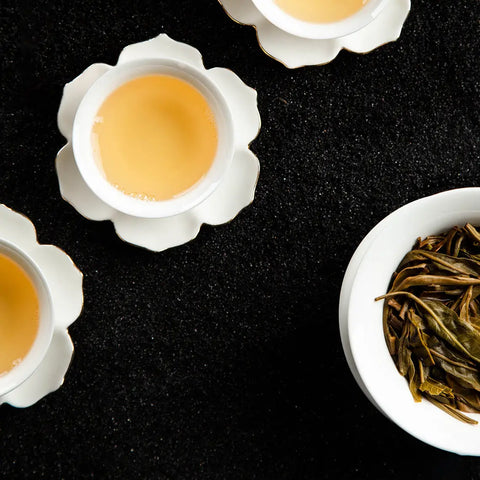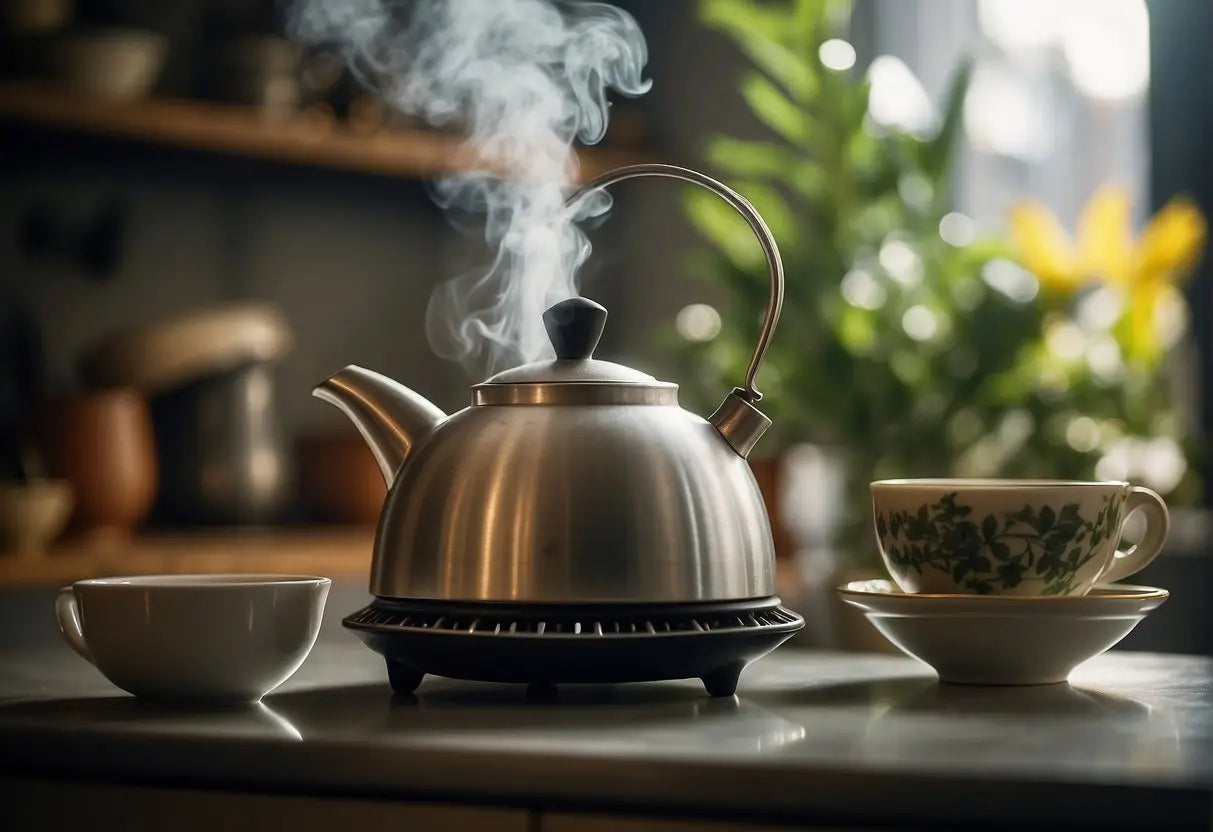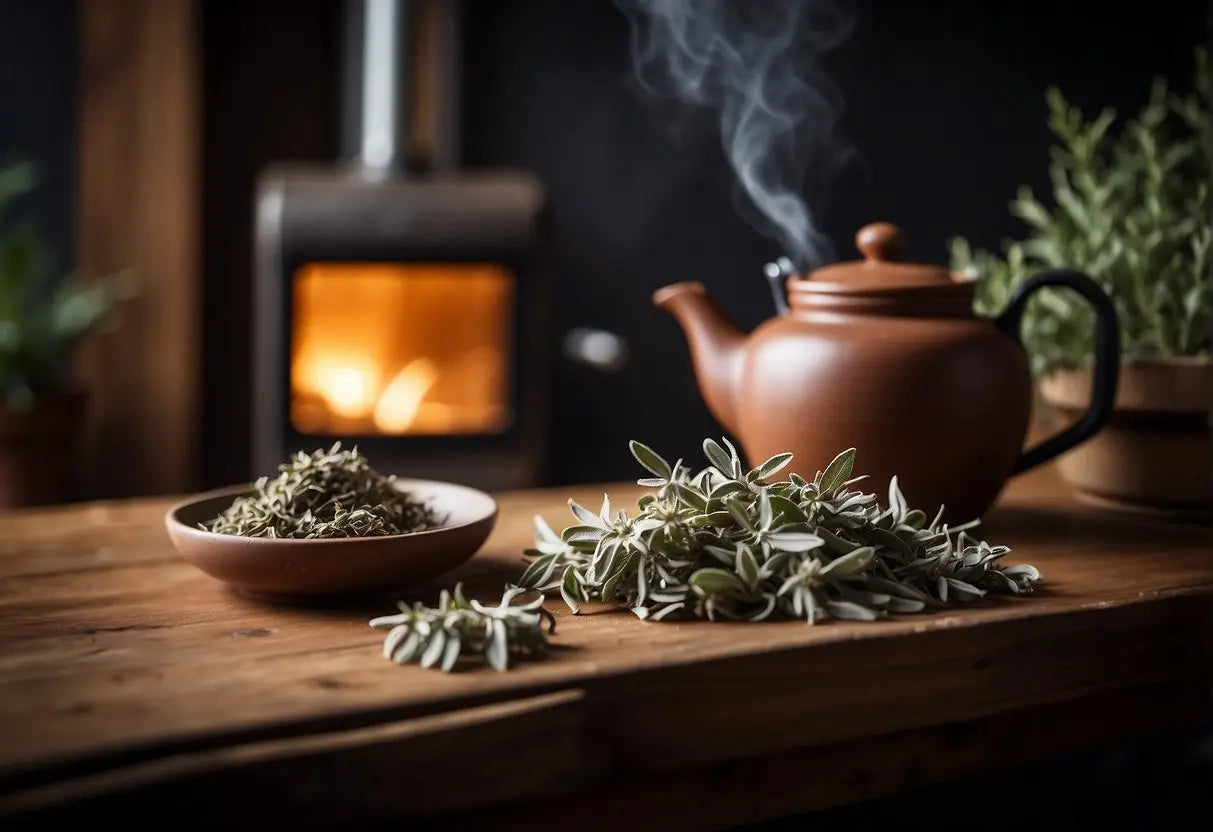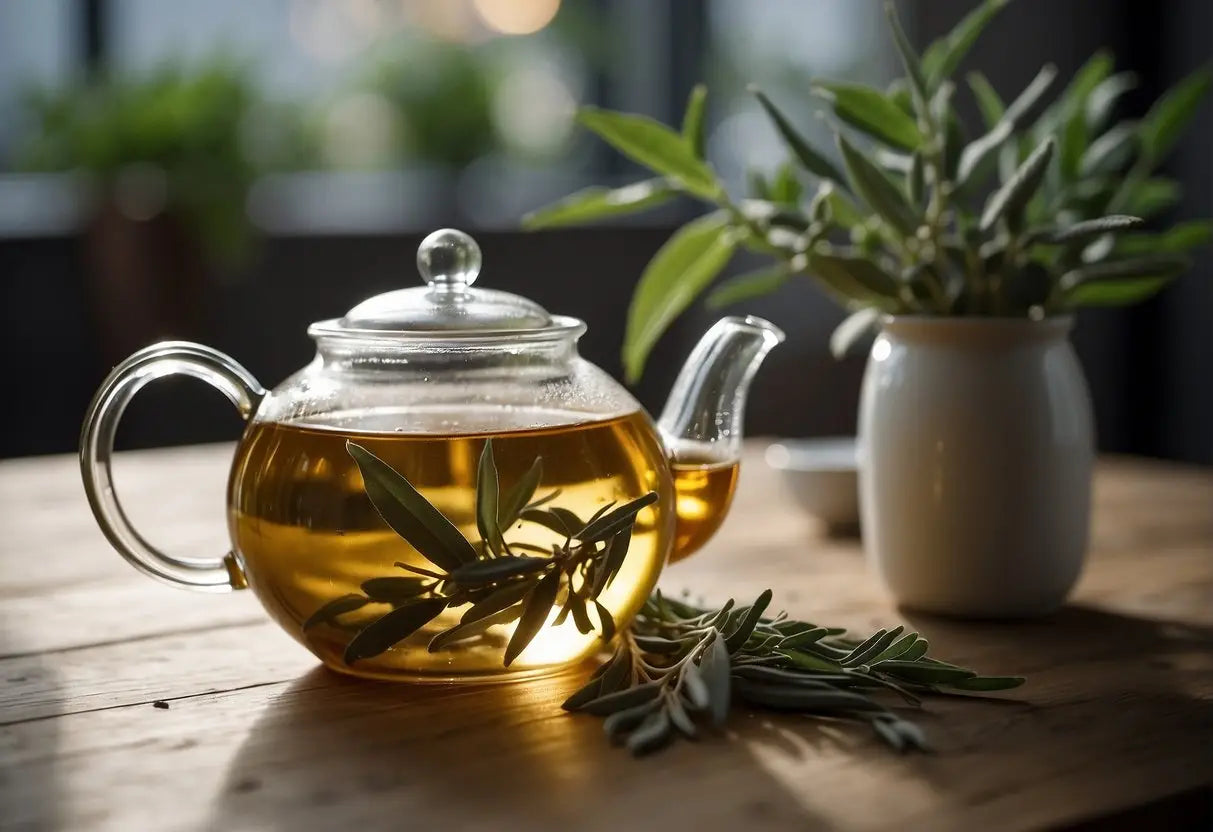How to Make Sage Tea
Sage tea, derived from the leaves of the Salvia officinalis plant, has a storied history of medicinal use. When consumed in moderation, you can experience several health benefits.
Antioxidant Properties:
Sage tea contains compounds like rosmarinic acid, which serve as antioxidants. These antioxidants help combat free radicals in your body, potentially reducing oxidative stress and supporting overall health.
-
Digestive Health:
Sage has been traditionally used to aid digestion. Drinking sage tea may help relieve mild cases of indigestion and bloating.
Cognitive Effects:
Some research suggests that sage can improve cognitive function and memory. Enjoying sage tea might provide a mild cognitive boost.
Bestsellers
-
Anti-inflammatory:
The anti-inflammatory properties of sage may benefit you if you’re dealing with sore throats or other inflammatory conditions.
Menstrual Health:
Women who experience menstrual discomfort might find relief with sage tea, as it has been used to alleviate symptoms of menopause as well, due to its estrogen-like properties.
-
Blood Sugar Regulation:
There is evidence to suggest that sage can help in regulating blood sugar levels, which can be particularly beneficial if you have diabetes or are at risk of developing the condition.
Note: Always consult with a healthcare provider before making changes to your health regimen, especially if you have existing health conditions or are pregnant. Sage tea should be consumed in moderation, as excessive consumption can lead to adverse effects.
Ingredients Needed for Sage Tea
To brew a comforting cup of sage tea, you will need the following ingredients:
-
Fresh sage leaves: 4-6 leaves
- Alternatively, use 1 tablespoon of dried sage leaves.
-
Water: 1 cup (250 ml)
-
Sweetener (optional):
- Honey or sugar to taste.
-
Lemon (optional):
- 1 slice or a few drops of lemon juice.
When selecting your sage leaves, ensure they are clean and free of pesticides. Organic sage is recommended. If using dried sage, opt for high-quality, preferably organic, to ensure the best flavor and health benefits.
To begin, you will need to gather the fresh or dried sage leaves. If choosing fresh leaves, gently wash and pat dry them before use. If you are adding sweetener, have it at hand, but remember it’s best to add after brewing to avoid bitterness. Keep the lemon slice or lemon juice ready, should you wish to add a citrus note to your tea.
Equipment Needed for Preparation

To start making sage tea, you'll need a handful of tools. Gather these items before you begin:
- Kettle or Pot: To boil water. Electric kettles are convenient, but any stove-top pot will do.
- Teapot with Infuser (optional): If you prefer to steep the sage leaves in a teapot, choose one with an infuser, or use a separate tea infuser.
- Teaspoon: For measuring the dried sage. One to two teaspoons should suffice for a single cup.
- Cup or Mug: A standard tea cup or mug from which to drink your tea.
- Strainer (if not using an infuser): A small, mesh strainer to separate the sage leaves from the water when pouring it into your cup.
Before you begin, ensure your equipment is clean to avoid any unwanted flavors in your tea.
Lao Ban Zhang
Step-by-Step Brewing Guide

Crafting the perfect cup of sage tea involves careful selection of leaves, precise water boiling, attentive steeping, and correct serving techniques.
Selecting Sage Leaves
To ensure a fresh and aromatic cup of tea, select high-quality, fresh sage leaves. If using garden sage, pick leaves that are vibrant green without any dark spots. Ideally, 2 to 3 large leaves or 4 to 5 smaller ones will suffice for one cup.
Boiling the Water
Bring water to a boil in a kettle. For one cup of sage tea, measure approximately 8 ounces (1 cup) of water. Once boiling, transfer the water into your teapot or mug to preheat it, which helps maintain the temperature during steeping.
Steeping the Sage Leaves
Place the sage leaves into the preheated teapot or mug. Pour the boiling water over the leaves. Cover and let them steep for about 4 to 5 minutes. For a stronger flavor, you can steep for up to 10 minutes.
Removing the Leaves and Serving
After steeping, remove the sage leaves to prevent over-extraction, which can cause bitterness. Strain the tea into a cup using a fine mesh strainer. Serve the tea hot, and if desired, enhance with a teaspoon of honey or a slice of lemon for added flavor.
Optimal Steeping Time and Temperature

When preparing sage tea, the steeping time and water temperature are crucial for extracting the best flavor and health benefits.
Temperature: Use water that is about 185°F to 200°F. This is below boiling, which is 212°F, to prevent burning the delicate leaves, which can produce a bitter flavor.
Steeping Time:
- For a stronger tea, steep your sage leaves for 10 to 15 minutes. This allows for a full extraction of the essential oils and compounds.
- If you prefer a lighter flavor, a steeping time of 5 to 8 minutes is sufficient.
Instructions:
- Heat water to the recommended temperature.
- Add sage leaves to a teapot or infuser.
- Pour hot water over the sage leaves.
- Cover and steep for the desired time based on your strength preference.
| Desired Strength | Steeping Time |
|---|---|
| Light Flavor | 5-8 minutes |
| Stronger Tea | 10-15 minutes |
To ensure optimal results, do not exceed the 15-minute mark, as it may result in a very strong and potentially overpowering flavor. Adjust the steeping time according to your taste, and enjoy your perfectly brewed sage tea.
Sage Tea Variations
Exploring variations of sage tea can enhance your drinking experience by introducing new flavors and potential health benefits unique to each addition.
Honey-Sweetened Sage Tea
For a touch of natural sweetness, you can add honey to your sage tea. Simply stir in 1 to 2 teaspoons of honey after steeping 1 tablespoon of fresh sage leaves in hot water for about 5 minutes.
Lemon-Infused Sage Tea
Adding lemon not only brings a refreshing zest but also vitamin C to your sage tea. Include a slice of lemon or 1 tablespoon of fresh lemon juice during the steeping process to infuse the citrus flavor.
Sage Tea with Peppermint
Combine sage and peppermint to create a revitalizing tea blend. Use 1 tablespoon each of fresh sage and peppermint leaves. Steep in boiling water for about 5 minutes before straining to achieve a minty, aromatic flavor.
Health and Safety Considerations
When preparing sage tea, your health and safety are paramount. It's important to understand the best practices for consumption and be aware of any possible interactions with medications you may be taking.
Safe Consumption Practices
- Frequency: Limit your intake to 2-3 cups per day to avoid potential toxicity.
- Quantity: Brew using 1-2 teaspoons of dried sage leaves per cup of water to ensure appropriate concentration.
Possible Interactions with Medications
- Blood Thinners: Sage tea can affect blood clotting. If you're on anticoagulants like warfarin, consult your healthcare provider.
- Diabetes Medication: Sage might lower blood sugar levels. Monitor your blood sugar closely if you're on diabetes drugs.
Always consult with a healthcare provider before adding herbal teas to your routine, especially if you have existing health conditions or are on medication.
Storing Sage Tea

When you've brewed a delightful batch of sage tea, proper storage is key to maintaining its freshness and potency. Here's how to store your sage tea:
Refrigerated Storage:
- Immediately after cooling: Transfer the sage tea into an airtight container.
- Label: Write the date on the container with a marker to keep track of freshness.
- Duration: Store it in the refrigerator for up to 5 days for best taste.
Freezing Option:
- Ice Cube Trays: Pour the cooled tea into ice cube trays for easy, portioned use later.
- Freezer Bags: Once frozen, transfer the cubes into freezer bags to save space.
- Thawing: Simply take out as many cubes as you need and thaw for quick use.
| Storage Method | Container Type | Maximum Freshness |
|---|---|---|
| Refrigerated | Airtight container | 5 days |
| Frozen | Ice cube trays & bags | 2 months |
Room Temperature Storage:
- Do not leave brewed sage tea at room temperature for over 2 hours, as it can lead to bacterial growth.
Additional Notes:
- Glass Containers: Prefer using glass containers as they don't retain odors and are easy to clean.
- Darkness: Store your tea in a dark place if the container is clear, to prevent degradation from light.
By adhering to these guidelines, your sage tea will retain its quality and flavor, ensuring that your next cup is as enjoyable as the first.
Serving Suggestions

When indulging in homemade sage tea, complementing it with a few garnishes and pairings can enhance your tea-drinking experience. Here are some ideas:
-
Sweeteners: If you prefer a touch of sweetness, you can opt for honey or maple syrup. These natural sweeteners blend seamlessly.
Sweetener Quantity Honey 1 teaspoon Maple Syrup 1 tablespoon -
Citrus Notes: A slice of lemon or a dash of lemon juice can add a refreshing zest and vitamin C to your sage tea.
- Lemon Slice
- 1 teaspoon Lemon Juice
-
Fresh Herbs: Accent your tea with a sprig of fresh mint or a cinnamon stick for added complexity and aroma.
- Mint Sprig
- Cinnamon Stick
-
Temperature: Sage tea can be served hot or iced. For a refreshing summer beverage, chill the tea and add a few ice cubes.
- For hot tea: Serve immediately after steeping.
- For iced tea: Cool down and add ice cubes.
Your sage tea pairs well with light biscuits or crackers. This can balance the inherent earthy flavor of sage and create a harmonious taste profile.
Remember, the key to the best experience with sage tea is to start with fresh ingredients and adjust additions to suit your personal preference. Enjoy your tea solo or as a soothing accompaniment to your relaxation rituals.
← Older post Newer post →











